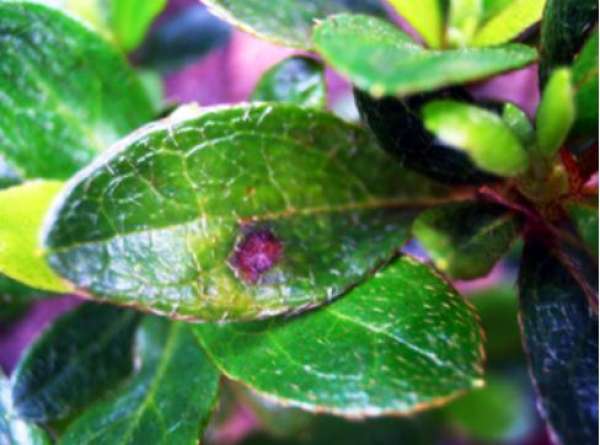
When Rhododendron occurs, there will be small brown spots on the leaf surface, which will gradually form irregular large spots, and then the leaves will fall off, affecting the flowering of the year and the development of flower buds in the next year. Brown spot often occurs in rainy season and humid weather.
In daily maintenance, pay attention to increase the environmental humidity, but also timely ventilation and light transmission. Increase the application of organic fertilizer or NPK compound fertilizer in time to enhance the disease resistance of plants. If the plant is found to be infected, the leaves shall be removed for decades and Bordeaux solution shall be sprayed.

The main reason of Rhododendron chlorosis is the lack of iron, especially in the alkali soil area, the late green phenomenon will appear. When severe, the blade edge is scorched yellow. The chlorosis of Rhododendron is most obvious in the top leaves, which is caused by iron deficiency.
Spray ferrous sulfate solution or alum fertilizer regularly. Of course, domestic vinegar can also be used. If the plant turns yellow seriously, you can use chopsticks to poke a few holes about 15 cm in the basin soil, and use 1:: 30 ferrous sulfate solution to irrigate, which can greatly increase the iron element in the soil.

At the onset of the disease, the roots and stems of Rhododendron appeared brown water spots, and then gradually became wet and rotted, and gradually spread upward. Eventually, the plant will wilt, the top bud will not sprout, the root system will rot and develop poorly. The leaves will also fall off, and some branches or the whole plant will be in the shape of black light rods.
In daily maintenance, it is better to use rainwater, river water, lake water or pond water for proper watering. Well water or tap water should be placed for 2-3 days for watering. In addition, when the disease occurs, the fungicide should be sprayed in time, and when it is serious, the plant can be taken out of the basin to clean the root.